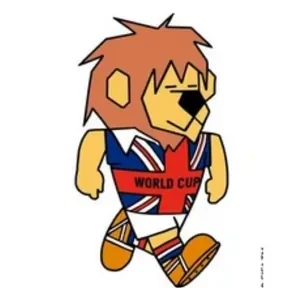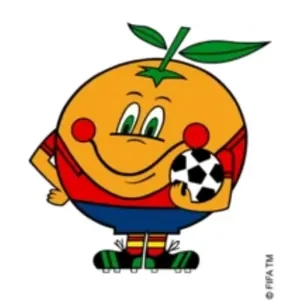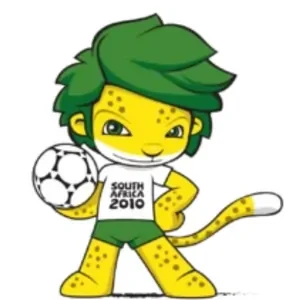List of FIFA World Cup Mascots
World Cup Willie (1966, England)
A lion, a traditional British mascot, sporting a shirt bearing the words “WORLD CUP” and the Union Flag. This was created by freelance Reg Hoye, a children’s book designer.

The figure was the subject of a comic strip by Bill Titcombe. Lonnie Donegan Jr. remixed the promotional song that his father, Lonnie Donegan, initially sang in 2014.
Juanito (1970, Mexico)

A young man wears a Mexican uniform and a hat (with the words “MEXICO 70”). His name is a Spanish short form of the popular name “Juan.”
Tip and Tap (1974, West Germany)

Two youngsters are sporting German uniforms bearing the number 74 and the letters WM (Weltmeisterschaft, World Cup).
Gauchito (1978, Argentina)

A kid is sporting the Argentina uniform. His hooded cape, whip, and cap, which bear the words Argentina ’78, are typical of gauchos.
Naranjito (1982, Spain)

An orange, a common fruit in Spain, wears the home nation’s uniform. Its name combines the diminutive suffix “-it” and the Spanish word for orange, Naranja.
Pique (1986, Mexico)

A top hat, mustache-sporting jalapeno pepper, a staple of Mexican cuisine. Its name is derived from the Spanish word Picante, which means hot or sour.
Ciao (1990, Italy)

A football player sticks man with an Italian Tricolore body and a stick figure head. Its name is a salutation in Italian.
Striker (1994, United States)

She is also Known As the World Cup Pupa. The dog is a popular pet in the United States, with the words “USA 94” on its red, white, and blue football shirt.
Footix (1998, France)

A cockerel, one of France’s national icons, bearing the letters “FRANCE 98” on its chest served as the World Cup’s mascot in 1998. Its name is a mixture of the words “football” and the ending “-ix,” a name suffix common among the Gauls. Its body is blue, like the home team’s jersey. Other names were “Raffy,” “Houpi,” and “Gallik.”
Ato, Kaz, and Nik (2002, South Korea/Japan)
Future-looking, computer-generated orange, purple, and blue animals served as the 2002 World Cup’s mascots.

Ato is the coach of a fictional football-like sports team called “Atmoball,” while Kaz and Nik are the players. Internet users and McDonald’s restaurants in the host nations chose the three names from shortlists.
Goleo & Pillie (2006, Germany)
A talking football named Pille and a lion sporting a Germany jersey with the number 06 served as the official mascots of the 2006 World Cup in Germany.

The term “goleo” is a combination of the Latin word for lion, “Leo,” with the word “goal.” A football is known as a “Pille” in German slang.
Zakumi (2010, South Africa)
Zakumi, a panther common to South Africa, has green hair and is dressed in clothing that reads South Africa 2010.

The color of the South African national sports team is symbolized by Zakumi’s green and gold. His name is a mix of “ZA,” which stands for South Africa, and “Kumi,” which in several African languages refers to the number 10.
Fuleco (2014, Brazil)
A Brazilian three-banded turtle with the words “Brasil 2014” on a white T-shirt featured as the mascot of the FIFA World Cup in 2014.

The sole endangered species in Brazil, the three-banded armadillo, is showcased by choice of Fuleco by drawing attention to the country’s rich biodiversity. The word “Fuleco” is a mix of the phrase “Ecologia” and “Futebol,” or “football” (“Ecology”).
Zabivaka (2018, Russia)

The Goalscorer, a wolf whose name translates from Russian, served as the 2018 World Cup mascot. Zabivaka is outfitted in red shorts and a T-shirt with the words “Russia 2018” printed on it in blue and white. The mascot was chosen through online voting, and the color palette is that of the Russian squad.
La’eeb (2022, Qatar)

A floating white keffiyeh with eyes wide open, brows, and lips. La’eeb, an Arabic term that means “super-skilled player,” is the mascot’s name.
Buffalo (2016, North America)
According to some resources, three different mascots were leaked for the FIFA world cup 2026. As we know, the World Cup 2026 will hosts by three countries, the USA, Canada, and Mexico.

So there are three different mascots, Uncle Same from the USA, A Buffalo from Canada, and Cactus from Mexico. But these mascots are still not officially confirmed by FIFA.



